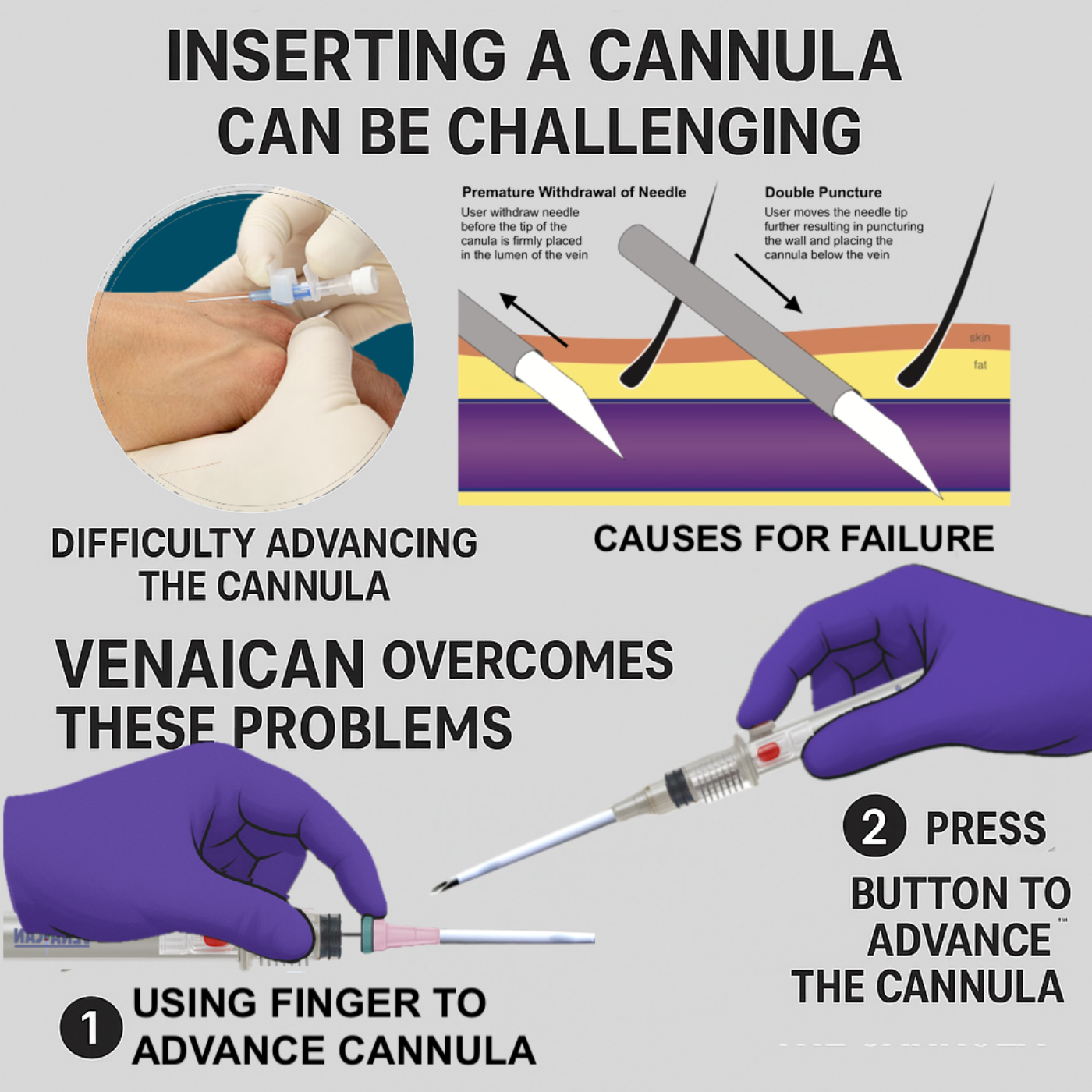Why IV Cannulation Remains a Daunting Task and How Can We Simplify and Ease the Technique?
- Author
- Kadiyali Srivatsa
- Published
- Wed 21 May 2025
- Episode Link
- https://rss.com/podcasts/srivatsa/2038712
Intravenous cannulation—a routine yet critical procedure—often becomes a source of pain, risk, and failure, especially in emergency settings or with vulnerable patients. For decades, healthcare workers have struggled to insert cannulas safely and effectively, especially when patients are dehydrated, in shock, infected, or suffering from skin conditions that make vein access difficult.
Cannulation is not just a technical procedure—it’s a lifesaving act that opens the door to pain relief, fluid resuscitation, nutrition, and emergency treatment. Yet, even in modern hospitals, multiple failed attempts, patient trauma, and infections remain common.
That’s where Venaican steps in: a revolutionary spring-loaded cannula poised to transform the way we insert IV lines—safely, swiftly, and with minimal training.
Why Cannulation Remains a Daunting Task
Despite technological advancements, cannulation continues to pose challenges due to:
- Collapsed or hidden veins in critically ill or dehydrated patients
- High-stress conditions in emergency rooms or during pandemics
- Patient movement or anxiety increases the chances of failed attempts
- Risk of needle-stick injuries to healthcare workers
- Infections, especially hospital-acquired and antibiotic-resistant microbes (ARM)
Repeated cannulation attempts also increase the chances of tissue damage, delayed treatment, and life-threatening complications.
The Silent Killer: ARM Infections in Hospitals
One of the most under-recognised dangers of cannulation is ARM (Antibiotic-Resistant Microbial) colonisation. Hospitals are breeding grounds for these deadly pathogens, which thrive on surfaces, equipment, and even on the skin of healthcare workers. Each failed attempt at cannulation is a new opportunity for these organisms to enter the bloodstream.
Today, ARM infections kill more people than most viral diseases, especially in intensive care units and surgical wards. Traditional cannulas, re-used or mishandled, only fuel the problem.
Venaican is a spring-loaded, self-introducing cannula designed with the future in mind. Its ergonomic design ensures that:
- Insertion is smooth and accurate, powered by a gentle spring mechanism
- Cannula advances without the user pushing force, reducing vein trauma
- Manual retraction of the needle eliminates automatic ejection risks
- Built-in safety features prevent reuse and needle-stick injury
- Transparent body reveals blood flow and placement confirmation
- Reduces contact time and contamination risk—vital in a pandemic
In short, Venaican minimises attempts, reduces contamination, and enhances safety for both patient and provider.
A Timely Innovation for Global Health Crises
During outbreaks such as Ebola, COVID-19, and drug-resistant bacterial infections, frontline workers face extreme pressure. Many die not from the disease itself, but from failed cannulations, exposure to infected needles, or delays in treatment. In such times, devices like Venaican are not optional—they are essential.
This innovation is ready for adoption—by hospitals, humanitarian missions, and emergency medical teams worldwide—to ensure no life is lost due to a failed cannula.
